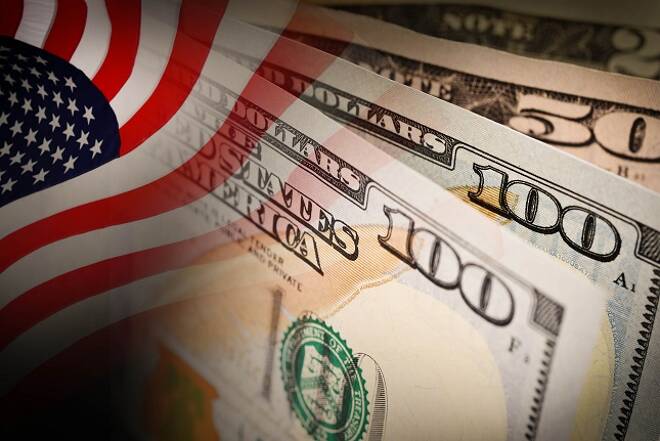Advertisement
Advertisement
Delving into US Dollar world
By:
Since the US elections 2016, it seems that US political risk has been the main driver of Dollar volatility. Focus has turned on the rising speculation of a potential US Dollar intervention.
The Dollar is traded softer since Asia session. Without delving into the overall market picture, Dollar has been mixed the past 2 months for a variety of reasons, with a large devaluation seen against safe havens and commodity currencies.
US Risks
Even though the Dollar remains the King of the world’s currencies, it faces a lot of risks:
- Political risk: The risk that US authorities will try to weaken the Dollar, with the potential for direct intervention by the Trump administration in FX markets and persistent pressure on the Fed to lower interest rates. This could be reflected from the rise of “emerging-market style” politics in the US, i.e. pro-cyclical, politically-targeted fiscal policies, generating higher-than-expected inflation, shaking confidence in the sovereign’s growing debt pool, weakening its currency, and injecting volatility into equity markets.
- NOT an official Intervention: There is a risk that the President could damage the US Dollar just by tweeting. As Katie Martin states: “Trade wars are now conducted by presidential tweet, so why not currency wars?”. President Trump could use “intervention” as a means to leverage up its negotiating position in trade talks with China and other major economies.
- Populism Risk, Government Instability and Social Instability Risk: According to Forbes, these Risk had a positive effect on USDIndex, and hence US Dollar. However, since 2016 election this changed dramatically into a negative correlation and it is expected to continue weigh on US Dollar, as market participants are pricing in these risks into US Dollar.
- Monetary policy: The USD is largely priced in for a 25 basis point Fed rate cut at the FOMC announcement on July 31, while based on South Korea’s central bank unexpected rate cut overnight, speculations for the Fed to be more aggressive at the stimulus spigot up to 50bp rate cut, rekindled.
- Slowing global growth: it is a “prominent risk” to the US, even though economic data reports have been good and have affirmed a positive outlook. The uncertainty over the global outlook could be a cause for businesses to pull back and the markets “could turn quickly” if worries over government borrowing hit a “critical point” as Fed George stated.
On the other hand, Geopolitical Risk is in general beneficial for the US Dollar.
Currency Market
USD Index:
The USD Index bottomed below 67.00. Softer US housing starts data weighed some on the Greenback, as did a pullback in Treasury yields. The narrow trade-weighted USD Index is down by over 0.5% from the highs seen on Tuesday. The USD Index is largely priced in for a 25 basis point Fed rate cut at the end of the month, and recent ranges will likely hold up until the FOMC announcement on July 31. As the asset is traded below 20-week SMA for 3 consecutive weeks, the medium term outlook remains neutral to bearish. Next Support levels are set at: 96.60, 96.35 and 96.00.
EURUSD:
EURUSD has been lifted by a turn lower in the Dollar, which has retraced about half the gains it saw during the first two days of the week. This put EURUSD to a 2-day high at 50-day SMA, at 1.1243. A rekindling in expectations for the Fed to entertain an outsized 50 bp rate hike at the upcoming FOMC meeting, sparked by a WSJ report suggesting that trade negotiations between the US and China are at a “standstill,” has weighed on the US currency. As for the Euro side of the equation, there remain reasons to be not-too-bullish, including the economic-slowing impact of Brexit-related uncertainty, which has been affecting activity on both sides of the channel. Upcoming ECB meetings, starting with the one next week, have shifted to “live” status, with the central bank considering a gear-shift to an explicit easing bias. At the moment, there is a neutral view of EURUSD as it consolidates between 1.1200-1.1300 area the past 2 weeks, and in the longterm it has stuck between 1.1150-1.1350 range, for the past 2 months. The pair has trended lower from early 2018 through to March this year, but has since stabilized as the Fed shifted to a dovish bias. Support comes in at 1.1180-90.
Andria Pichidi, Market Analyst at HotForex
(Read Our HotForex Review)
About the Author
Andria Pichidicontributor
Andria is a a Market Analyst with a mission to actively support HotForex’s clients in becoming better traders, by delivering daily market reviews.
Advertisement
